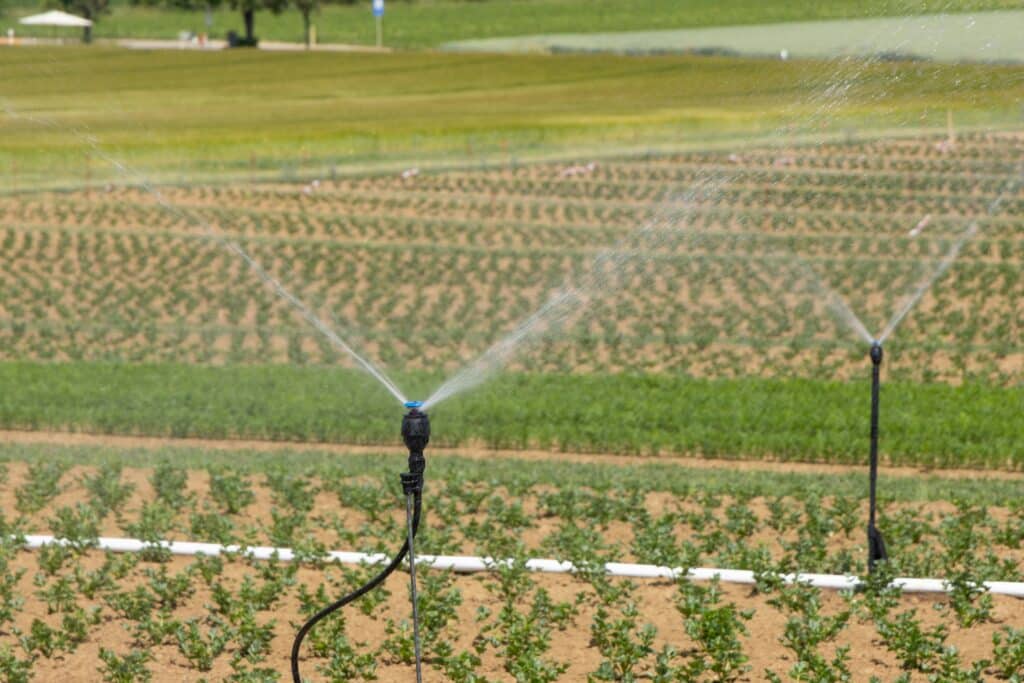Overly dry or excessively wet soil can hinder plant growth, leaving gardeners frustrated and puzzled. Enter mulching—a simple, yet highly effective gardening technique that holds the key to maintaining optimal soil moisture levels. This write-up, “Maximize Moisture: Mulching Tips to Keep Your Soil Hydrated Longer!”, is a comprehensive guide to mastering the art of mulching and keeping your soil hydrated longer.

When it comes to garden care, the spotlight usually falls on choosing the right plants, battling pests, or mastering the art of pruning. However, soil hydration is an equally crucial component that directly influences plant health and productivity. In the upcoming sections, we will delve into the importance of soil hydration, how mulching helps to preserve moisture, and the right mulching techniques to keep your garden thriving.🌱
Furthermore, the knowledge shared in this post is not confined to the conventional gardening enthusiasts. Even if you are an urban dweller with limited space for gardening, you can still benefit from these mulching tips to keep your indoor plants hydrated and healthy. Whether you are a seasoned gardener, a beginner, or an urbanite looking to green up your living space, this guide will be your go-to resource for maintaining optimal soil moisture through mulching.
As we journey together through this write-up, get ready to uncover the best mulching materials, the right time to mulch, and how much mulch you should use for different plants. By the end of this, you’ll have a wealth of knowledge that will enable you to elevate your gardening skills and keep your plants in prime condition. So let’s dive into this world of mulching and explore its incredible benefits for maintaining soil hydration!💧🌿
Understanding the Importance of Soil Moisture and Mulch
In the domain of gardening and farming, maintaining optimal soil moisture is paramount. Soil moisture directly impacts the health and productivity of your plants. It acts as the medium through which essential nutrients are absorbed by plant roots. Soil hydration helps to ensure plants receive adequate water and nutrients needed for growth and sustenance.
One of the most effective methods to preserve soil moisture is the application of mulch. Mulch refers to any material spread over the surface of the soil as a covering. It serves multiple functions: it helps retain soil moisture, improves soil fertility and health, reduces weed growth, and enhances the visual appeal of the area.
Types of Mulch
Mulch can be organic or inorganic. Organic mulches include compost, straw, grass clippings, wood chips, and shredded bark. These types of mulches improve soil fertility as they decompose over time. On the other hand, inorganic mulches such as plastic, stones, and landscape fabric primarily serve to suppress weeds and conserve water.
Selecting the Right Mulch
The selection of the right mulch depends on various factors such as the type of plants, climate, soil type, and the specific requirements of your garden or farm. Organic mulches like compost or straw are generally suitable for vegetable gardens as they enrich the soil with nutrients. In contrast, inorganic mulches like landscape fabric are more suitable for areas with decorative plants where soil fertility is not a concern.
The Best Time to Apply Mulch
Ideally, mulch should be applied during the spring season when the soil has warmed up adequately. Mulching too early can slow down the warming process, which can impact plant growth.
Applying Mulch for Maximum Soil Moisture
The process of applying mulch is quite straightforward. Begin by removing any weeds from the area. After that, water the soil thoroughly. Next, apply a layer of mulch around the plants and over the soil.
The thickness of the mulch layer is crucial. A layer that is too thin will not effectively conserve soil moisture, while a layer that is too thick can prevent water from reaching the soil. Generally, a layer of 2-4 inches is considered ideal for most mulch types.
Mulching Tips
- Do not pile mulch against the stems or trunks of plants as it can lead to rotting.
- Replenish organic mulches regularly to maintain their thickness and effectiveness.
- Consider the aesthetic aspect when choosing mulch. For instance, shredded bark and wood chips can enhance the look of your landscape.
Mulching and Water Conservation
The connection between mulching and water conservation is quite significant. By maintaining soil moisture, mulch reduces the need for frequent watering, which is especially beneficial in regions with water scarcity. Moreover, mulch prevents the evaporation of water from the soil surface, allowing plants to access water for longer periods.

Choosing Mulch for Drought Conditions
In areas prone to drought or during the hot summer months, using mulch to conserve water is a practical strategy. Organic mulches are particularly effective in these situations. They not only retain water but also insulate the soil, protecting it from extreme temperatures.
The Impact of Mulching on Soil Health
In addition to maintaining soil moisture, mulching has several benefits for soil health. As organic mulches decompose, they release nutrients into the soil and improve its structure. This leads to enhanced soil fertility and promotes the growth of beneficial microorganisms.
Furthermore, mulching helps prevent soil erosion by protecting the soil surface from the impact of raindrops. It also maintains a stable soil temperature, which is beneficial for plant roots.
Maximizing the Benefits of Mulching
To maximize the benefits of mulching, it’s essential to choose the right mulch for your needs, apply it at the right time and in the right way, and maintain it properly. Remember to keep the mulch layer at an optimal thickness and replenish it as necessary. With proper mulching, you can effectively maximize soil moisture, improve the health of your plants, and contribute to water conservation.
Conclusion
In summary, maintaining soil moisture is a crucial part of ensuring a thriving garden. By implementing the mulching tips outlined in this article, you can keep your soil hydrated for extended periods. Remember, mulching is not just about watering less. It’s about creating a healthier, more sustainable environment for your plants to grow.
Organic mulches like straw, wood chips, or compost, are excellent options to consider. They not only retain moisture but also improve soil fertility as they decompose over time. Moreover, they are eco-friendly, helping to reduce waste and promote a more sustainable gardening practice.
Additionally, it’s essential to consider the depth and timing of your mulch application. Mulch applied too thinly or at the wrong time might not provide the moisture retention benefits you’re seeking. Hence, ensure you apply the mulch correctly and at the right times to maximize its benefits.
Lastly, remember to maintain your mulch regularly, and ensure it does not compact or form a barrier that prevents water from reaching the soil.
By following these tips, you can keep your soil hydrated longer, support healthier plant growth, and contribute to a more sustainable environment. Happy gardening! 🌱🌼🌻



